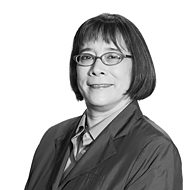Boomers Are Hoarding Cash in Their 401(k)s—Here's a Better Strategy

As you close in on retirement, it’s crucial to minimize the risk of big losses in your portfolio. Given how expensive traditional safe havens, such as blue chips and high-quality bonds, have become, that’s tricky to do today. So for many pre-retirees, the go-to solution is more cash.
How much cash is enough? Many savers seem to believe that today’s high market valuations call for a huge stash—the average investor has 36% in cash, up from 26% in 2012, according to a recent study by State Street. The percentage is even higher for Baby Boomers (41%), who are approaching retirement—or already there.
That may be too much of a good thing. Granted, as you start to withdraw money from your retirement savings, having cash on hand is essential. But if you’re counting on your portfolio to support you over two or more decades, it will need to grow. Stashing nearly half in a zero-returning investment won’t get you to your goals.
To strike the right balance between safety and growth, focus on your actual retirement needs, not market conditions. Here’s how.
Safeguard your income. If you have a pension or annuity that, along with Social Security, covers your essential expenses, you probably don’t need a large cash stake. What you need to protect is money you’re counting on for income. Calculate your annual withdrawals and aim to keep two to three years’ worth split between cash and short-term bonds, says Marc Freedman, a financial planner in Peabody, Mass. That lets you ride out market downturns without having to sell stocks, giving your investments time to recover.
This strategy is especially crucial early on. As a study by T. Rowe Price found, those who retired between 2000 and 2010—a decade that saw two bear markets—would have had to reduce their withdrawals by 25% for three years after each drop to maintain their odds of retirement success.
Budget for unknowns. You may be able to anticipate some extra costs, such as replacing an aging car. Other bills may be totally unexpected—say, your adult child moves back in. “People tend to forget to build in a reserve for unplanned costs,” says Henry Hebeler, head of AnalyzeNow.com, a retirement-planning website.
In addition to a two- to three-year spending account, keep a rainy-day fund with three to six months of cash. Or prepare to cut your budget by 10% if you have to.
Shift gradually. “For pre-retirees, the question is not just how much in cash, but how to get there,” says Minneapolis financial planner Jonathan Guyton. Don’t suddenly sell stocks in year one of retirement. Instead, five to 10 years out, invest new savings in cash and other fixed-income assets to build your reserves, Guyton says. Then keep a healthy allocation in stocks—that’s your best shot at earning the returns you’ll need, and you can replenish your cash account from those gains.
